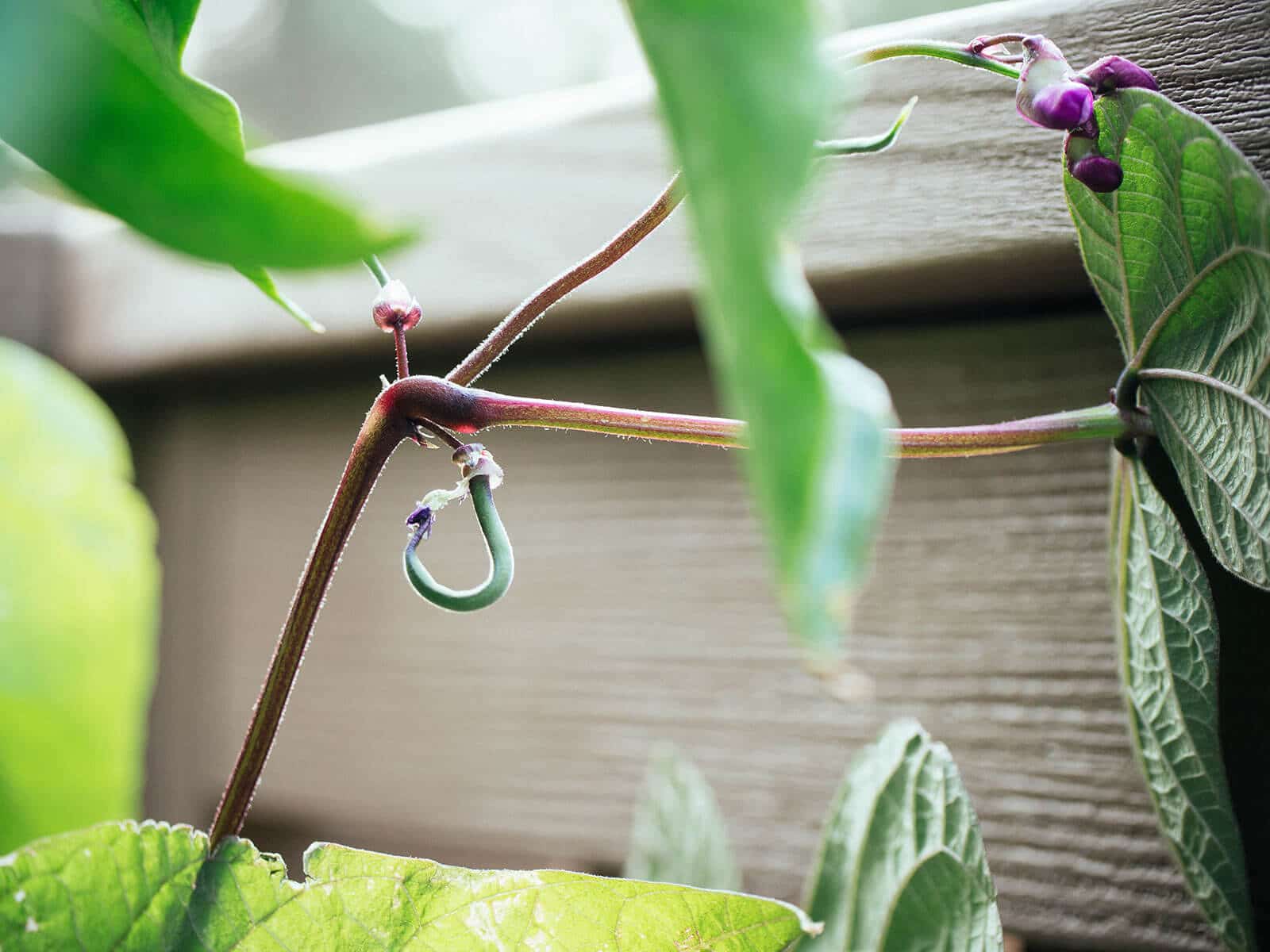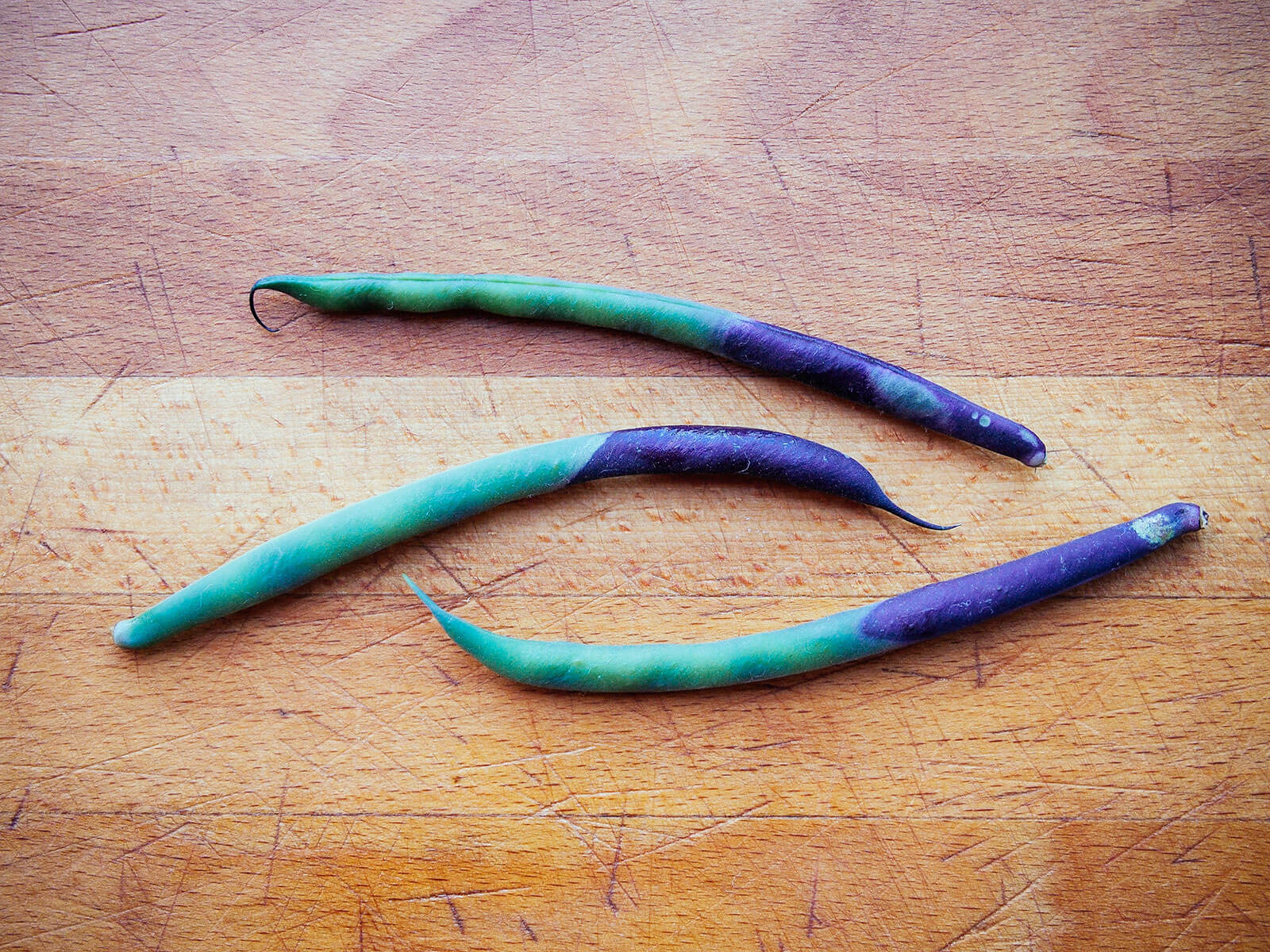Purple beans are really quite special. These are my favorite type of “green” bean because they’re so easy to pick. The pods are brightly colored and stand out among the leaves. They look great next to all the emeralds, chartreuse, and hunter greens in the garden.
Please note that if you buy something after reading this article or clicking on one of my links, I may get paid a small fee.
Have you ever cooked up a batch of vibrant purple beans only to watch them transform into green beans before your eyes? This intriguing color change is something many home cooks experience when preparing purple beans But what causes this chameleon-like shift? Here’s an in-depth look at the science behind purple beans turning green when cooked
About Purple Beans
Purple beans go by many names including purple snap beans, purple string beans, royal burgundy beans, and more. Botanically they are Phaseolus vulgaris, the same species as common green beans. The distinctive purple color comes from the presence of anthocyanin pigments in the bean pods. Anthocyanins are antioxidant compounds that provide the bright colors of many fruits, vegetables, and flowers including blueberries, plums, red cabbage, and more.
In raw purple beans, high concentrations of anthocyanins mask the chlorophyll in the pods, creating a vivid purple color. But when cooked, chemical changes take place that shift the color from purple to green.
Why The Change When Cooked?
Two primary things happen during cooking that cause the purple beans to turn green:
1. Heat Decomposes Anthocyanins
The anthocyanin pigments that give purple beans their color are sensitive to heat. As the beans are cooked the high temperatures degrade and decompose the anthocyanin compounds. With less anthocyanins present, the purple color fades.
2. Cell Structure Breaks Down
Cooking also ruptures the cell structure of the bean pods. This releases acids and other compounds from inside the cells. The cell sap of purple beans is naturally acidic with a low pH. This acidity intensifies the purple color. When cooking bursts the cells, the pH rises becoming less acidic. More neutral pH conditions cause the purple color to fade.
As the anthocyanins break down and the acidity drops, the purple hue dissipates revealing the underlying green chlorophyll. The chlorophyll was there all along but masked by the purple pigments. With those pigments degraded, the chlorophyll takes over as the dominant color.
Pigment Science
To fully understand the color change of purple beans, we need to dive deeper into the science of pigments.
Anthocyanins: Water-soluble pigments that appear red, purple, or blue depending on pH levels. More acidic conditions make anthocyanins more vividly purple.
Chlorophyll: Fat-soluble green pigment present in all green plants. Not affected by pH changes.
Carotenoids: Fat-soluble yellow/orange plant pigments. Also pH stable.
In raw purple beans, anthocyanins are concentrated in the acidic cell sap, causing an intense purple color. Chlorophyll and carotenoids are also present but their green and yellow hues are suppressed.
Cooking degrades the anthocyanins and makes the cell contents less acidic. This allows the chlorophyll to take over as the dominant pigment, shifting the beans to green.
Anthocyanins & Health
Although they lose their color when cooked, anthocyanins still offer health benefits. Studies link anthocyanin consumption to:
- Improved heart health
- Reduced inflammation
- Lower cancer risk
- Better brain function
- Anti-diabetes effects
So while purple beans turn green, they still provide antioxidants, vitamins, minerals, and fiber. Enjoy them for the added splash of color and nutrition they bring to your plate!
Cooking Tips for Purple Beans
If you want to preserve more of the fresh purple color, here are some tips:
-
Steam or blanch beans briefly instead of boiling.
-
Microwave just until tender-crisp.
-
Stir-fry on high heat for a short time.
-
Sauté beans gently in a pan with oil.
-
Add acidic ingredients like lemon juice or vinegar.
Keep cook times short and temperatures lower to maintain vibrancy. Acidic ingredients also help stabilize the purple hue. Though the color will still fade, these tricks maximize the purple shades in finished dishes.
Common Questions
Here are answers to some frequently asked questions about purple beans:
Are purple beans safe to eat?
Yes, purple beans are perfectly safe to eat. The pigments that give them their color are natural plant compounds that are harmless.
Do purple beans taste different than green beans?
Purple beans have a very similar flavor to green beans – lightly sweet, nutty, and crisp. The color does not impact the taste.
Can you eat purple beans raw?
Absolutely! Raw purple beans have the most stunning vibrant purple color. Use them fresh in salads, veggie trays, or dipping platters.
Can you freeze purple beans?
Freezing is a great way to preserve fresh purple beans. Blanch first, then freeze in airtight bags. They’ll thaw a bit more green but still have purple hues.
Are purple beans healthy?
Yes! Like other beans, they are rich in fiber, vitamins, minerals and antioxidants that promote health. The anthocyanins offer additional benefits.
Do all purple beans turn green when cooked?
All varieties of purple beans undergo this transformation. Some retain a hint more purple than others, but they will all shift toward green with cooking.
The Magic of Purple Beans
Seeing purple beans turn green is a fascinating phenomenon that reveals the scientific secrets hidden within our food. Understanding the pigment properties, chemical reactions, and cellular changes that cause this visual switch gives us an appreciation for the complexity of plants. While the color may be fleeting, enjoy purple beans for their novelty, versatility, and nutrition. Their chameleon-like nature adds a touch of magic and vibrancy to your plate!

Where do purple beans get their color?
Anthocyanins are plant pigments that give string beans and snap beans (like Royal Burgundy and Dragon Tongue) their deep purple color. Yardlong beans (like Chinese Red Noodle) and hyacinth beans (like Ruby Moon) also have this color.
(But note that anthocyanins are only responsible for certain reds. You can see red colors in some plants, like beets and chard. These colors come from betalains, which are only found in Caryophyllales plants. Other red pigments, like those in red peppers and red tomatoes, come from carotenoids. ).
There are anthocyanins in every part of a plant. They can be found in the stems, leaves, flowers, fruits, and roots (but not all at once).
With purple beans, the pigments primarily show up in the flowers, which gradually give way to purple-tinged pods.

How heat affects anthocyanins
Anthocyanins are highly susceptible to heat and light. Sometimes apples look more red on one side than the other. You may have seen this happen. This happened because the red side got more sunlight, which caused a chemical reaction in the plant cells that made more pigments.
When it comes to purple beans, however, heat plays the principal role. Boiling, baking, or sauteing at high temperatures causes the anthocyanins to deteriorate.
The heat breaks down the plant cells, which spreads the pigments out in a more neutral solution (water) and makes the cell sap less acidic.
What’s left is green chlorophyll, which was always in the beans but couldn’t be seen because of the anthocyanins in the plant.
So your purple beans turn green, and the boiled water is blue because all the colors leaked out.

